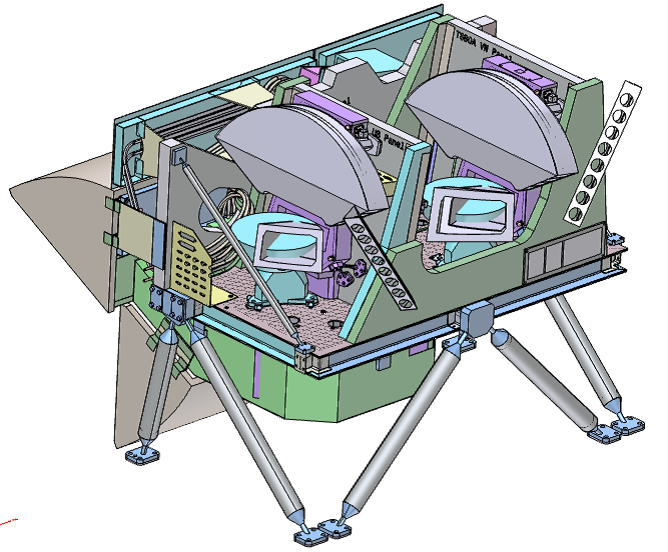CAMS will provide coherent information on atmospheric variables in support of European policies and for the benefit of European citizens and will cover ozone and surface UV, air quality, and climate applications. Sentinel-5 is focused on air quality and composition-climate interaction with the main data products being O3, NO2, SO2, HCHO, CHOCHO and aerosols. Additionally Sentinel-5 will also deliver quality parameters for CO, CH4, and stratospheric O3 with daily global coverage for climate, air quality, and ozone/surface UV applications.
Sentinel-5 will not be carried aloft on its own satellite platform but consists of a dedicated instrument onboard EUMETSAT's polar satellites EPS-SG A. In that respect it is very similar to that other dedicated atmospheric composition mission Sentinel-4, which will be launched onboard EUMETSAT's geostationary satellites MTG-S. The first EPS-SG A satellite is slated to be launched in early 2025.
Legacy
The European forerunner in atmospheric composition monitoring was the famed ENVISAT, launched in 2002. It was the largest Earth observation satellite ever built and carried an array of ten scientific instruments for observing the Earth’s atmosphere, land, oceans and ice caps. It more than doubled its design lifetime, only being decomissioned in 2012. By that time the precursor of the Copernicus programme, GMES, had already been established and plans for a fleet of dedicated missions for atmospheric composition monitoring were in the works (the missions that would become Sentinel 4 and Sentinel-5). In order to minimize the datagap between the demise of ENVISAT and the launch of the first S4 and S5 satellites in the early 2020s, a dedicated precursor mission was built and launched in 2018: Sentinel-5P, which is still operational today.

Sentinel-5 instrument
Sentinel-5 instrumentation
Main characteristics of the Sentinel-5 instrument:
- Type: passive grating imaging spectrometer
- Configuration: Push broom staring (non-scanning) in nadir viewing
- Spectral: 5 spectrometers (1 in UV1, 1 in UV2VIS, 1 in NIR, 2 in SWIR)
- Design lifetime: 7.5 years
More on Copernicus
The Copernicus Programme is an Earth observation initiative that forms a crucial part of the European Union Space Programme. Managed by the European Commission in collaboration with various European organizations such as the European Space Agency (ESA), the European Organisation for the Exploitation of Meteorological Satellites (EUMETSAT) and the European Centre for Medium-Range Weather Forecasts (ECMWF), Copernicus aims to establish a comprehensive Earth observation capacity that is global, continuous, autonomous, and of high quality. The primary objective of the programme is to provide accurate, timely, and easily accessible information to improve environmental management, understand and mitigate the impacts of climate change, and ensure civil security.
Click here to visit our dedicated Copernicus page